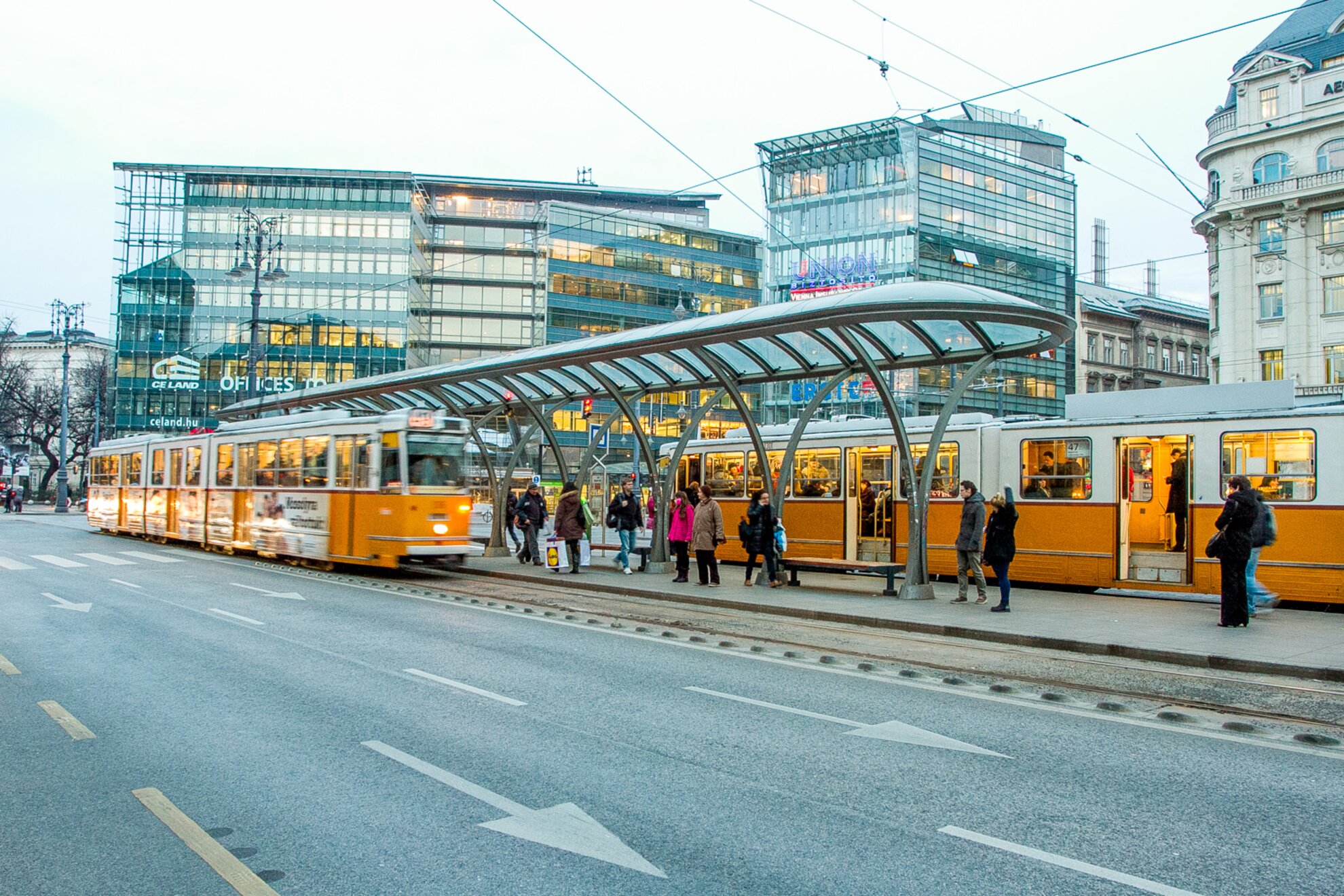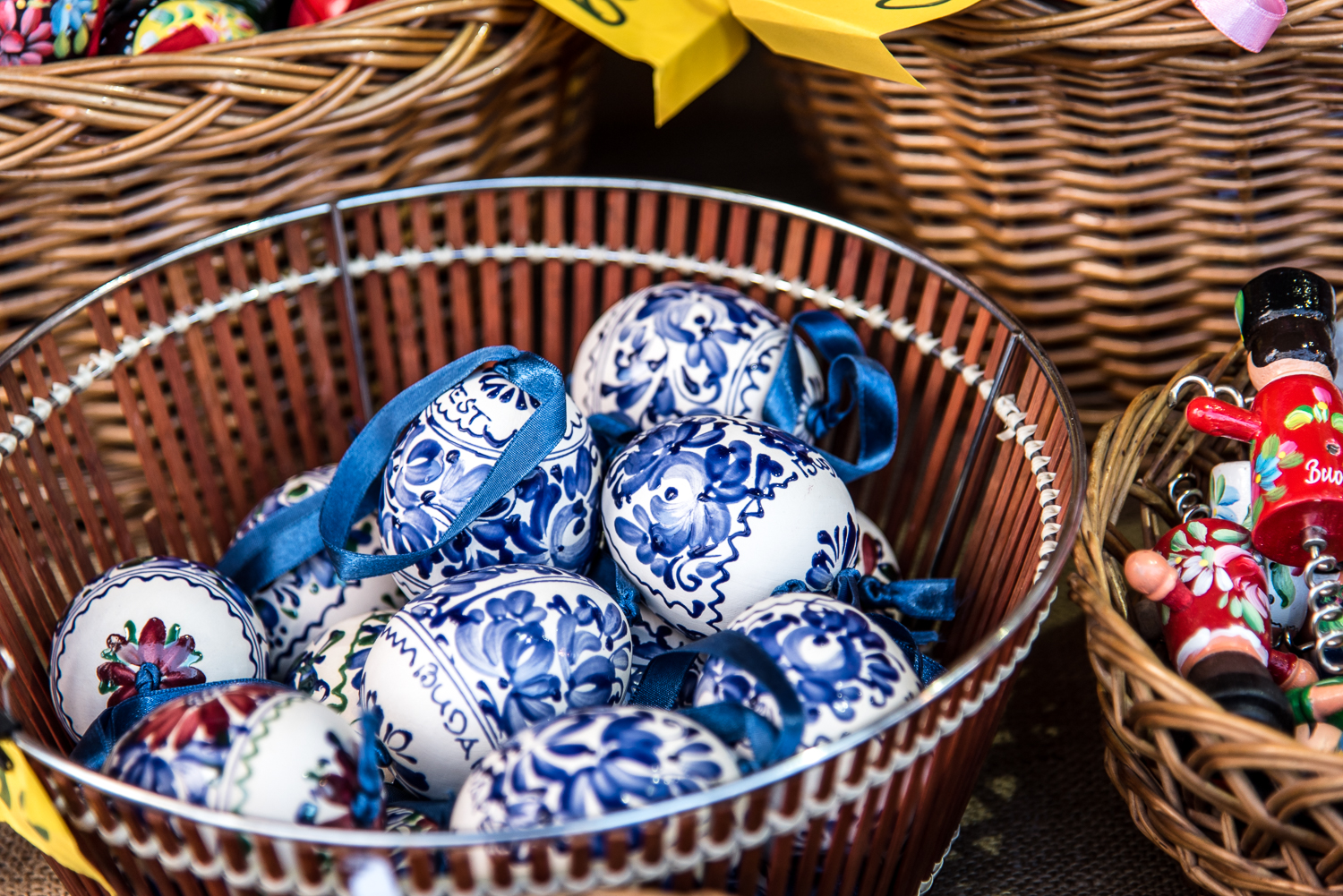Kálvin tér is one of Budapest’s most vital junctions, the meeting place of nine roads including the city’s longest, three districts, two metro lines, the airport bus and numerous tram and bus routes. Nearby stand the National Museum and the prestigious universities of law, medicine and the humanities.
But the 1700s saw its own particular bustle. The Kecskemét Gate of the medieval city wall surrounding Pest opened at the mouth of today's street of the same name – the statue of Gyula Illyés, whose writings evoked the Great Hungarian Plain, is an apt monument in the underpass.
Major roads from a huge swathe of south-eastern Hungary swept right up to this point, and the square became an ideal setting for the annual fairs held here several times a year.
One of its early names even refers specifically to this function: in the 18th century, it was called Heu- und Borstenviehhändler Platz (Hay and Cattle Traders’ Square), later simplified to Hay Market (Heumarkt) and then to the Hay Square (Heuplatz), the carts pulling up here laden with hay.
As with any fixed location of busy annual fairs, inns, washrooms and stables were set up, most notably the legendary Two Pistols, which stood on the right side of the National Museum. In its heyday, the Two Pistols was one of the city’s most famous hotels, with huge traffic during fairs –József in March, Medárd in June, János in August and Lipót in November – but by the middle of the 19th century, it had become wild and nefarious.
The Kecskemét Gate was demolished in 1796, and the remaining city wall in the early 1800s, today’s Kiskörút (Small Boulevard) being built where it ran. The construction of the National Museum, which defines the image of the area to this day, took place between 1837 and 1847, on the site Antal Batthyány’s old mansion. Thanks to this stately edifice, the character of the neighbourhood started to change slowly, nobility moving in, and one of the most elegant areas of the modern-day capital took shape. The fairs were slowly dismantled as the system of market halls developed.
Another defining feature of the square is the Reformed Church designed by József Hofrichter, for which they were offered an old cemetery plot outside the city wall in 1801. Completed in 1830, it survived the Great Flood eight years later. The church then lent its name to the square in 1975, after the French theological reformer, Jean Calvin.
Around 1870, the Two Pistols was demolished, and the building of the First Pest Savings Bank, designed by famed architect Miklós Ybl, was erected in its place.
In 1885, the Vasárnapi Újság wrote about the square:
“The landscaping of Széna tér (‘Hay Square’) will begin next spring and its bare stalls will be tidied up. It is high time for this rubbish and mud heap to be put in into better hands”.
By the turn of the century, this had become one of the most elegant squares in the city. Here stood the headquarters of the Dutch-Hungarian Insurance Company, Ybl’s bank occupied the corner of Üllői út and Ráday utca, before the headquarters of the Farmers’ Insurance Co-operative were built there in 1913 according to the plans of Dezső Hüttl, while another Ybl creation, the Geist House, stood across the square where Kecskeméti utca met Múzeum körút.
Looking at the photographs, you also come across a familiar feature: the original of the Danubius Well, a copy of which can today be found on Erzsébet tér, which stood here from 1883 until World War II. The well was destroyed in the Siege, and its only surviving statue, the Sava, can be seen inside one of the doorways on Ráday utca.
The war also wreaked havoc around the square, almost all of Ybl’s masterpieces had to be demolished, replaced by gaps and huge firewalls, orphaned single-storey buildings or temporary park areas until the 21st century. The left wing of today’s Korona Hotel is a good example.
The square was dominated by a huge red star until 1956, and the Hungarian Uprising. While cannon and tank battles took place, one of the important fire pits was dug here and the inscription Ruszkik haza (‘Russkis Go Home!’) was painted in white over the walls.
In the spirit of Kádár-era ‘consumer socialism’, firewalls became one of the largest advertising surfaces in the city – the most famous was the advert for Fabulon cosmetics and the gaze of model Ági Pataki.
For a quarter of a century, the square was decorated with this work by Miklós Erdély, which was much more than a simple giant billboard. The ceramic mosaic work, made with a special technique, was assembled with little cells across a huge surface and, unlike painted ads, withstood the vicissitudes of the weather perfectly. The work was removed in 2000, when construction began on an office building and remains packed in crates, awaiting another twist of fate.

The familiar face of today’s square, mainly dominated by contemporary, controversial, façades, began to take shape around the change of regime in 1989. The Korona Hotel, designed by Csaba Csontos, was opened in 1990, before the Kálvin Tower office building and Kálvin Center were completed.
As traffic intensified and cars became the focus of city planning, the square became more of a transport hub and lost its green character, becoming a nightmare for pedestrians.

The recapture and relandscaping of Kálvin tér began after the construction of metro line 4, after which one of the city’s most special, award-winning works of art was made here, for the 500th anniversary of the Reformation. The paving slabs inserted between site-specific ‘K-stones’ feature the thoughts of the Reformers and their contemporaries, which pedestrians can read at random by their feet while walking around the square.




